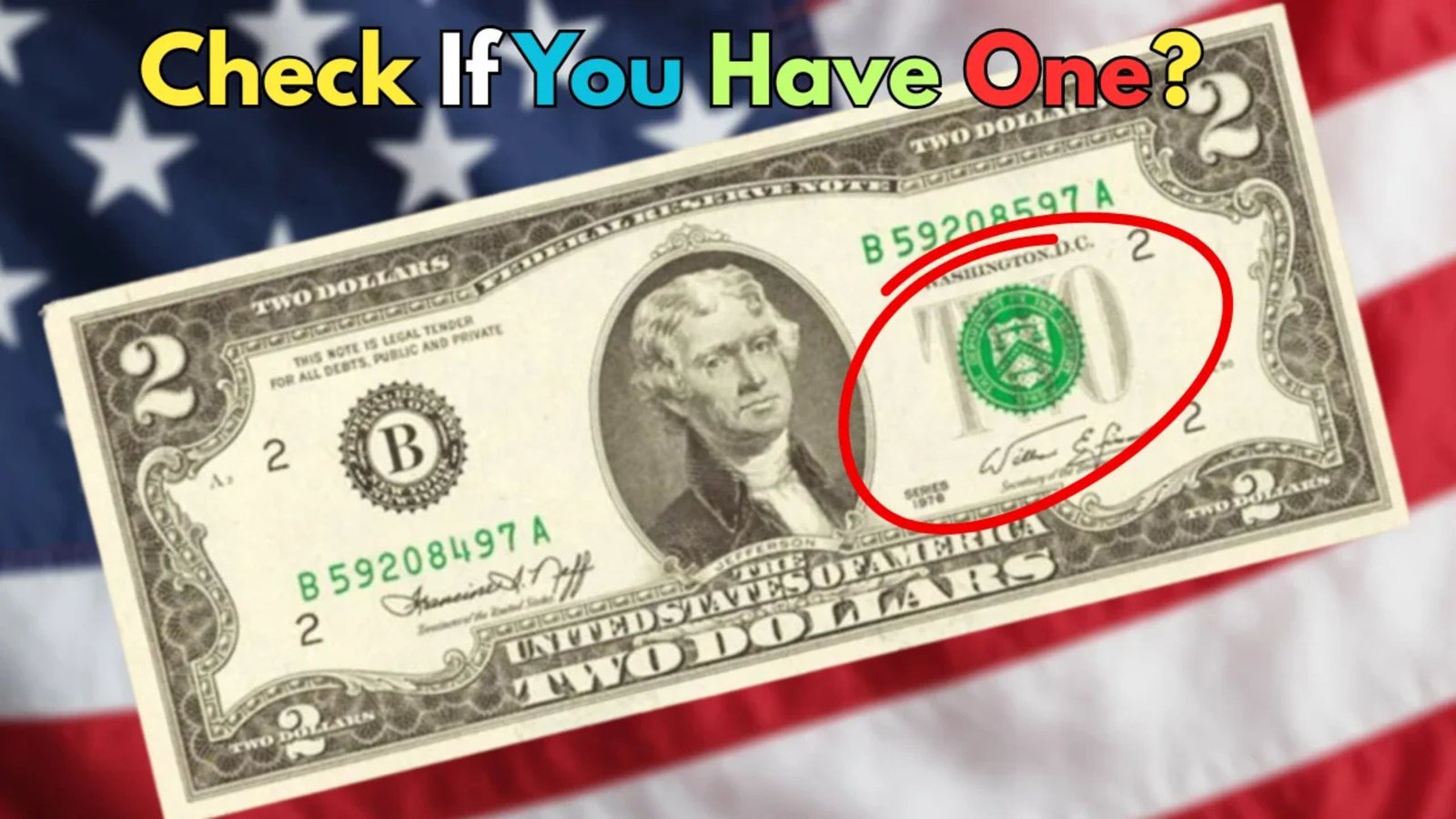2003 $2 Bill : Most people don’t think of $2 bills as anything special — they’re often seen as quirky or outdated. But a specific version of the 2003 $2 bill could be worth as much as $775,000 due to one extremely rare feature: its serial number. This isn’t a mistake or printing error, but rather a once-in-a-lifetime alignment of numbers that makes the bill incredibly valuable to collectors.
What Is a Ladder Serial Number and Why Is It So Rare?
On every U.S. bill, there’s an eight-digit serial number printed on the front. A “ladder” serial number means the digits appear in perfect sequence, such as 12345678. This precise order is extremely rare — only one such sequence exists in every full run of bills. That rarity makes ladder serial numbers highly sought after and extremely valuable in the collector market.
Why Collectors Consider Ladder Bills the Holy Grail
Among “fancy” serial numbers, ladders are considered the most desirable. Unlike patterns such as repeaters or radars (like 12211221), a full ascending ladder is visually perfect and mathematically unique. It appeals not just to currency collectors, but to anyone fascinated by numerical precision. That appeal — combined with the fact that there can be only one perfect ladder in a given series — makes it a true collector’s trophy.
Why the 2003 $2 Bill Is the Star of This Story
The $2 bill itself is a rarity in circulation. While the U.S. Treasury still prints them occasionally, they’re not widely used, which makes them feel special. The 2003 series was produced in large quantities, but many of those bills were saved rather than spent. That means a ladder serial number from this series could very well be sitting in someone’s forgotten drawer, untouched for years.
How to Know If You Have One of These Rare Bills
If you happen to have a 2003 $2 bill, take a close look at the serial number. If the digits read 12345678, you may be holding the only perfect ladder from that run. The condition of the bill plays a major role too — pristine, uncirculated bills fetch the highest prices. If your bill has any creases, stains, or wear, its value might decrease, but it could still be worth a substantial amount.
Why Condition Is Critical to the Bill’s Value
Collectors place heavy emphasis on a bill’s physical state. A ladder serial number is impressive, but if the bill is damaged, folded, or faded, it loses part of its appeal and value. Uncirculated bills — those that have never been used — are rated higher and often sold for premium prices. So if you do find one, handle it carefully and avoid unnecessary wear.
How to Authenticate and Sell a Rare $2 Bill
Before you try to sell a potentially valuable bill, it’s important to get it graded and authenticated by a professional currency service such as PMG (Paper Money Guaranty) or PCGS Currency. These companies provide official certification, verifying the bill’s authenticity and grading its condition. Once graded, the bill becomes far more appealing to serious buyers and auction houses.
A Million-Dollar Find Could Be in Your Wallet Right Now
This story is a reminder of how everyday items — like paper money — can turn out to be incredibly valuable under the right circumstances. A simple $2 bill from 2003, with nothing more than a perfect serial number, could bring life-changing money. So next time you see a $2 bill, don’t overlook it. Check the serial number — you might just be holding something worth far more than it seems.





